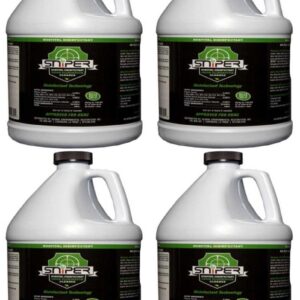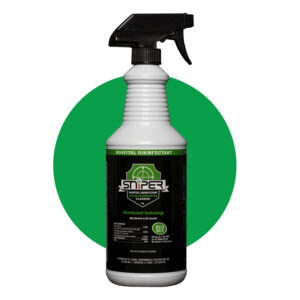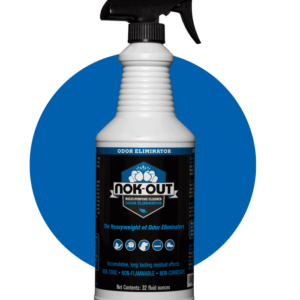OMG Flooding
Disaster! Your home has been flooded! Two feet deep. And all that water came with a LOT of mud and muck that has started to stink. What to do? How can SNiPER or Nok-Out help with flood recovery? Restoring a home that has been flooded is an immense amount of work that is complicated by the sludge left behind because that sludge is likely to have everything from toxic chemicals to overflow from sewage ponds in it. Given that you must dry everything within 48 hours to stop the growth of mold, mildew and fungal infestations, you have a powerful need for a disinfecting odor eliminator to help you restore your home, your car, your offices. This is a perfect use for SNiPER, because with this one product, you can both disinfect and deodorize as part of flood recovery.
Disinfection
You need to disinfect not only for the nasty pathogens that may come from the sewage ponds, but also because natures little recyclers (mold, mildew, fungus) will begin growing within 48 hours if you cannot dry it out. Some – not all! – but some of those molds are actually quite toxic and you really don’t want that stuff adding to the problems.
Odors
Many stinks in the world are of biological origin. A good example is sweat. Our perspiration is not smelly, until bacteria living in our skin start eating it. Their excrement is what stinks – not your feet! So killing or holding down the growth of biologicals can help keep horrible odors at bay. As both a disinfectant and odor eliminator, SNiPER is perfect for flood relief, and home restoration.
How can SNiPER help my flooded home?
After you have pumped out the water, after the carpet and the upholstered furniture has all been thrown out to the curb, after the baseboards have been removed and holes poked in the drywall to allow trapped water to escape, it may well still be damp. But you can already begin spraying SNiPER even if it IS still a bit damp. Lightly spraying those damp areas that have stayed wet for 48 hours will slow the growth of biologicals and is an important part of flood recovery. It will not prevent the growth, but it can slow it down until your home has dried out further. The only thing that will stop the growth is for the area to be dry and SNiPER can retard growth enough to help prevent the entire structure being eaten by mold.
If mold has already started growing visibly, spray directly on it. (Be safe! Wear an N-95 mask, gloves and eye protection. If you start feeling ill or woozy, stop, go outside and breathe fresh air, before deciding if you can continue.) Use a soft scrub pad from the kitchen and try to scrub the crud loose, wipe it away, spray one more time and then you can walk away, leaving it to air dry naturally. If possible, use a ‘fogger’ for maximum efficiency in spraying. See below for links to many of our ‘how-to‘ articles on controlling mold.
Why can’t I just use bleach?
Bleach doesn’t kill mold. Let me say this one more time – bleach does not kill mold. It will weaken the growth and it will make it change color, but bleach does not kill mold or the spores. SNiPER kills both – safely.
What about my furniture?
That overstuffed sofa that you like so much is likely to take several days to dry in the best of conditions. It is highly likely that mold will begin growing deep inside the stuffing where you cannot see it. Given the difficulty of drying and then removing the odor from that sludge, it is unlikely that sofa will ever be usable again. It is possible that you could clean it up, but given the demands on your time and the difficulty associated with cleaning it up, you will have to decide if it is worth trying to save it. It will certainly be a long row to hoe if you want to save it!
What about clothing? Can SNiPER save my clothes?
Yes – SNiPER or Nok-Out can be added to loads of laundry and if there is visible mold present, SNiPER will kill it. See https://nokout.com/Laundry-Odors.html for instructions.
Spores?
“My home is mostly dry, but still damp in some places. I know mold is growing because I can smell it. Should I worry about the spores in the air?”
Yes – you should worry! Breathing in mold spores is not a good idea. Spraying the air with SNiPER will kill the spores. A professional would use a fogger to spray the air, because this machine can create droplet sizes that are small enough to float around on the breeze. Wonderful machines, but expensive. A slower alternative is to use a common household vaporizer or a room humidifier. These can do the same thing but are very slow. We have a good article for you here.
I have a 2500 ft house. How much SNiPER do I need?
A very good question. And, one that is not easy to answer because it depends on so many things, such as “how much do you spray”?, “should I spray more here”? “am I spraying enough? or not enough”? and so on. You will likely need around 1.5 gallons to make it around the house once spraying economically. But you may find that you need more than that.
In general, spray enough that the area becomes wet, but not so much that it runs down the wall as if you had sprayed too much paint. Do not wipe it away, instead, allow it to air dry. SNiPER is non-corrosive and will not damage the sprayed surfaces.
Sewer Bacteria
A very important consideration is the bacteria that come up out of sewers during a ‘big flooding’ event. Wherever that nasty water went – it carried those bacteria with it. These bacteria can easily pass to you if you touch something wet and then later, touch your mouth. Stop this mode of transmission by spraying interior surfaces with SNiPER.
Stay Safe!
Wear the mask (N-95) to avoid the possibility of breathing in spores and other muck. If you begin to feel ill – stop! Go outside and recover. Consider hiring a pro to do this for you. Here are symptoms to watch out for:
- headaches
- rashes or hives
- eye irritation
- nasal passage/sinus congestion or irritation
- difficulty breathing
- nosebleeds
Keep children away from standing water and mud, which is often contaminated with toxic chemicals and sewage. Pay attention to dangerous debris such as boards with protruding nails. Unplug all electronics and electrical devices. Make sure that gas is shut off. Avoid drinking tap water until you are sure it is drinkable again.
Some of our ‘How-to’ mold articles
https://nokout.com/Cleaning-Mold-and-Mildew.html
https://nokout.com/Get-Rid-of-Musty-smells.html
https://nokout.com/Basement-Mold-and-Mildew-Removal.html
https://nokout.com/Get-Rid-of-Black-Mold.html
https://nokout.com/Mold-and-Mildew-Problem.html
https://nokout.com/Keep-black-mold-out-of-your-shower-stall.html
More Information
https://www.epa.gov/mold/mold-cleanup-after-floods?utm_content=&utm_medium=email&utm_name=&utm_source=govdelivery&utm_term=
https://www.epa.gov/sites/production/files/2017-08/documents/mold._homeowners_and_renters_guide_to_cleanup_after_disasters.pdf





